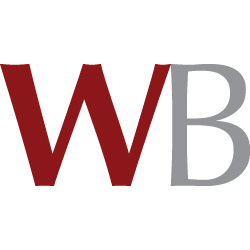
Astonishing prices across the board encourage the view that art is an asset class that can be used as a hedge against inflation. However, there is a reason that art investment is usually limited to the sophisticated investor – its lack of liquidity, the opacity of the market and high transaction and holding costs.
The art market is back in business – the recovery started with
the February sales at Sotheby’s and Christie’s in London and
continues to gain momentum. The May auctions in New York indicate
that quality works are continuing to find their way to the sale
rooms after a dry spell in 2008-09. Although Picasso’s 1932 Nude,
Green Leaves and Bust made a record $106 million at Christie’s
there were other excellent results – notably an Andy Warhol 1986
Self-Potrait (sold by Tom Ford) that went for $32 million at
Sotheby’s.
Astonishing prices across the board encourage the perception that
art is an asset class that can be used as a hedge against
inflation. However, there is a reason that art investment is
usually limited to the sophisticated investor – amongst others
the illiquidity of the asset, the opacity of the market and high
transaction and holding costs.
Art is an illiquid asset and this illiquidity increases with the
price – the market for a multi-million dollar artwork tends to be
smaller than for a work with a lower value. This is not aided by
the fact that auctions take place only at certain intervals
during the year and that selling privately can take months to
accomplish. When buying for investment, careful planning is
therefore required – both of purchase and sale. However, in a
market that is largely supply-driven, opportunistic buying should
not be taken out of the equation, which means the investor needs
to have the cash available to buy quickly (the Picasso mentioned
above had been in the Brody collection since the 1960’s).
Although more works are coming to auction now than was the case
in 2008-09, many artworks are still traded privately in order to
avoid the risk of ‘burning’ the work (artspeak for a work going
unsold at auction which might negatively affect its market
value). Buying privately is largely dependent on the access the
buyer or his advisors have to the right works at the right price
which is notoriously difficult in a market as secretive as the
art market – unlike in other markets insider trading is essential
in order to succeed.
Once the cash and the access are taken care of – which category
of art to choose from? Contemporary art can make spectacular
profits but is also by far the most volatile category – see the
fluctuations in value of Hirst and Prince and others over the
past two years. Contemporary artists still have to prove their
place in the history books and it is often suggested that more
than 90 per cent of contemporary art sold will actually decrease
in value in the long run. However, prices for dead artists tend
to surge as a result of the perceived rarity factor – the fact
that the supply has dried up has a positive effect on the work’s
value. Investing in an established category such as Old Masters,
Post-War, Modern or Impressionist means that their value has been
recognised but also that the potential for profit generally will
be less.
Trading art is expensive. Whether buying at auction or privately
there is a premium or commission to be paid which varies
(roughly) between 10 and 20 per cent. In Europe (and California)
artist’s resale regulations (ARR) stipulate that a buyer pays a
percentage of the resale value to living artists (and their
estates from 2012). Although in Europe ARR is capped at €12,500
(around $13,360) it is a tax additional to potential sales and
import taxes and affects mainly contemporary, post-war and modern
art.
When selling, at least in the UK, capital gains tax might apply
and there is talk of an increase from 18 per cent to 40 per cent.
Transport, storage, insurance, conservation and administration
are additional expenses. Research needs to be performed for works
that could have provenance, title or authenticity problems
(particularly art produced before 1933-1945). Although a buyer
can nowadays insure against title risk it is nevertheless an
addition to the overhead. Careful planning, due diligence and
obtaining access to the market is feasible but it means that the
right expertise (tax, legal, art advisors) will need to be
bought. In contradiction to stocks, art does not produce an
income to cover these expenses so the profits had better be
stellar.
